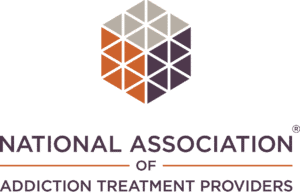10 Ways to Stop Addiction

If you are struggling with addiction, remember that it is a disease that can be treated, not a moral failing.
Substance use disorders (SUDs) cause brain changes that result in a compulsion to use drugs or alcohol. It is a chronic mental health condition, but with the right treatment and support, it is possible to achieve sobriety.
Silicon Valley Recovery offers individualized addiction treatment based on patients’ long-term goals and mental health concerns.
Contact us today if you need assistance, or look over our list of tips to help you overcome addiction.
10 Ways to Stop Addiction
1. Admit There Is A Problem
Recognize that you have an addiction problem. Admitting you have an addiction is the most difficult part of recovery. Substance use disorders affect the brain, causing it to look for reasons to continue using.
Admitting a problem shows you have the courage to face your addiction and its underlying causes.
There are numerous places to seek help; however, having a strong support system is essential regardless of the treatment approach you choose. Talk to a therapist, doctor, or rehab facility if you are not ready to confide in friends or family.
2. Reflect On Your Addiction
Take some time to consider what is important to you, how addiction has harmed you, and how your life will improve with sobriety.
Keeping a daily journal is the simplest way to effectively reflect. You can help yourself start a plan to stop addiction by keeping a journal to help identify patterns, triggers, goals, and motivators.
3. Seek Professional Support
Silicon Valley Recovery’s residential treatment program provides a calm, structured environment in which to begin the drug and alcohol recovery process. Our 24-hour staff is trained in a variety of treatment options in order to provide each resident with the most individualized, effective treatment program possible.
Residential treatment options include:
- Individual Therapy
- Group Therapy
- Family Therapy
- Peer Support Groups
- Chemical Dependency Counseling
- Detox and Medication-Assisted Treatment (MAT)
SAMHSA’s National Helpline is another useful resource. It is a free, confidential, 24/7, 365-day-a-year treatment referral and information service (in English and Spanish) for individuals and families dealing with mental and substance use disorders.
You can reach them at (800) 662-HELP (4357) or call our local rehab center at (888) 795-1965 today.
4. Appreciate The Benefits of Sobriety
Sober living allows you to rediscover the good in your life. At Silicon Valley Recovery, we treat co-occurring disorders like depression and anxiety, which can have an impact on addiction.
People in recovery who actively treat these aspects frequently find themselves enjoying:
- A greater sense of liberty
- Improvements in both mental and physical health
- Better financial stability
- Improved friendships and family relationships
- More time to devote to what is truly important to them
5. Dual-Diagnosis Treatment
Dual diagnosis, otherwise known as co-occurring disorders, refers to when an individual has a substance use disorder and another condition, such as anxiety, PTSD, depression, ADHD, or other mental health illnesses. In our San Jose facility, we have an integrated dual diagnosis treatment that uses our expertise in both realms to provide relief from the pain and uncertainty of mental health symptoms, while also educating our clients on how they can truly thrive without the need for self-medication.
6. Identify Your Triggers
A trigger is something that, based on previous experience, causes an emotional reaction. In the case of addiction, a trigger can frequently result in a strong desire to relapse.
Some common triggers include:
- Stress
- Uncomfortable Emotions
- Environmental Cues
- Social Isolation
- Mental or Physical Illness
We can manage these triggers by developing healthy coping skills once we have identified them.
7. Change Your Environment
When you stop using drugs or alcohol but keep the same routines or habits, your chances of relapsing are much higher. Avoid people, places, and situations that make you want to use to help your recovery.
Several changes will occur during recovery, including:
- Your approach to stress
- Who you hang out with
- What you do in your spare time
8. Exercise
“There is no depression buster as effective for me as exercise,” says mental health advocate Therese J. Borchard. While working up a sweat, you will not only improve your overall health and well-being, but you will also feel endorphins being released naturally.
Engaging in some form of exercise is frequently one of the best ways to stop an addiction.
In addition to being a great distraction, exercise can help:
- Restore normal brain function
- Stress and tension should be reduced.
- Improve your sleep
- Reduce cravings
- Improve your self-esteem
9. Accept The Past
It is normal to feel guilty or ashamed about your addiction, past behavior, or past actions. As you progress in your recovery, it is critical that you deal with these emotions by making amends to yourself and others.
We can provide ourselves with the opportunity for change in the future once we accept the past. Each person who leaves Silicon Valley Recovery is required to create an aftercare plan outlining their recovery and future goals. They are also invited to join us on our journey by attending free tune-ups.
10. Call For Help
It takes time, motivation, and support to recover. It can be difficult; however, the benefits of seeking help and starting the journey far outweigh the risks of continuing to use substances.
Our California addiction recovery center has a full staff of qualified professionals to answer any questions or concerns you may have and to discuss the best treatment options available.









